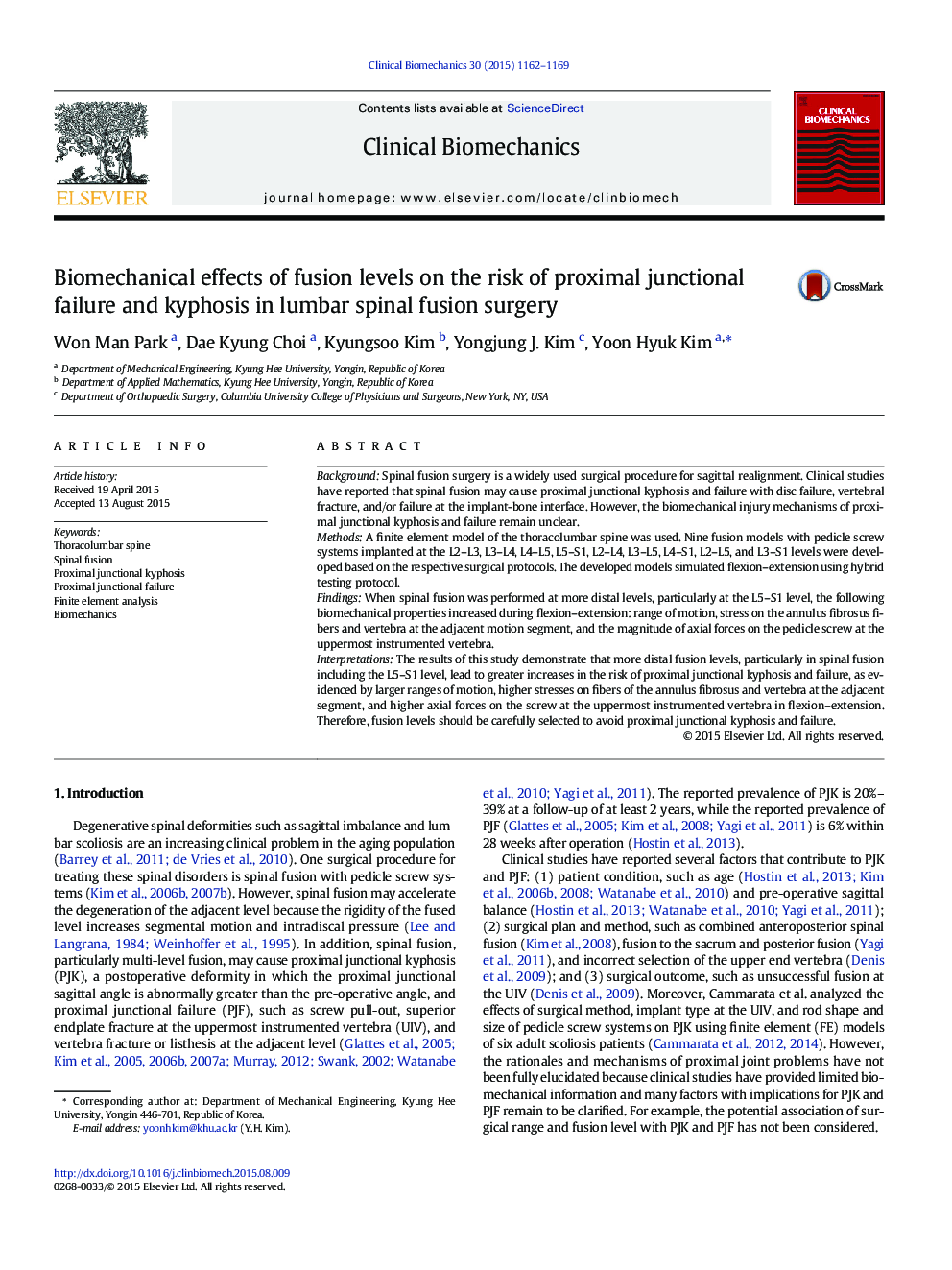| Article ID | Journal | Published Year | Pages | File Type |
|---|---|---|---|---|
| 4050087 | Clinical Biomechanics | 2015 | 8 Pages |
•The effects of fusion level on proximal junctional problems were investigated.•Several biomechanical parameters were analyzed using finite element analysis.•Expansion of fusion increased risk of proximal junctional problem.•More distal level fusion showed higher risk of proximal junctional problem.•Spinal fusions including the L5–S1 level have the significantly higher risk.
BackgroundSpinal fusion surgery is a widely used surgical procedure for sagittal realignment. Clinical studies have reported that spinal fusion may cause proximal junctional kyphosis and failure with disc failure, vertebral fracture, and/or failure at the implant-bone interface. However, the biomechanical injury mechanisms of proximal junctional kyphosis and failure remain unclear.MethodsA finite element model of the thoracolumbar spine was used. Nine fusion models with pedicle screw systems implanted at the L2–L3, L3–L4, L4–L5, L5–S1, L2–L4, L3–L5, L4–S1, L2–L5, and L3–S1 levels were developed based on the respective surgical protocols. The developed models simulated flexion–extension using hybrid testing protocol.FindingsWhen spinal fusion was performed at more distal levels, particularly at the L5–S1 level, the following biomechanical properties increased during flexion–extension: range of motion, stress on the annulus fibrosus fibers and vertebra at the adjacent motion segment, and the magnitude of axial forces on the pedicle screw at the uppermost instrumented vertebra.InterpretationsThe results of this study demonstrate that more distal fusion levels, particularly in spinal fusion including the L5–S1 level, lead to greater increases in the risk of proximal junctional kyphosis and failure, as evidenced by larger ranges of motion, higher stresses on fibers of the annulus fibrosus and vertebra at the adjacent segment, and higher axial forces on the screw at the uppermost instrumented vertebra in flexion–extension. Therefore, fusion levels should be carefully selected to avoid proximal junctional kyphosis and failure.
